Big Year Birding on the South Texas Coast
Note: This is the sixth in a series of occasional blog posts by GGBA member George Peyton about his other half Lani Rumbaoa’s effort to see over 600 bird species in the Lower 48 states in 2015.
By George Peyton
The Texas Coast is one of the two most famous “magnets” for spring migrants in the United States. (Magee Marsh near Toledo, Ohio, is the other.)
Therefore, it was crucial for Lani to be successful in reaching her Big Year Goal of 600 bird species that she identify as many special species as possible during our two weeks in Texas.
To Lani’s extreme good fortune, our close birding friend, whom we call “Birder Bob”, volunteered to be Lani’s unofficial bird guide in Texas — and what an exceptional job he did. Bob Hirt is an excellent birder in the field, and in addition, he spends an amazing amount of time preparing for a bird trip by reading guides such as the ABA Guide to Bird-finding on the Texas Coast in detail. He made numerous notations for further review, checked maps and directions, and reviewed field marks and songs of the many Target Birds Lani needed to add to her Big Year List.
Bob is dogged in tracking down a particular Target Species. He and I had seen both Baird’s and White-rumped Sandpipers (both somewhat difficult to see in Texas) in a partially flooded, plowed field with well over 1,000 other sandpipers, mainly Dunlin and Short-billed Dowitchers. But they were needles in a haystack, with Lani unable to get decent identification views before most of the flock suddenly flew away. We stopped at many other fields with sandpipers without luck. Finally, two days later at the tail end of a large thunderstorm, Bob suddenly pulled a U-turn on a highway on the Bolivar Peninsula to check a short, grassy field where sandpipers had been pushed down by the heavy rain. Sure enough, out among the several hundred waders of about ten species, he spotted both White-rumped and Baird’s Sandpipers, and Lani had very good scope views.

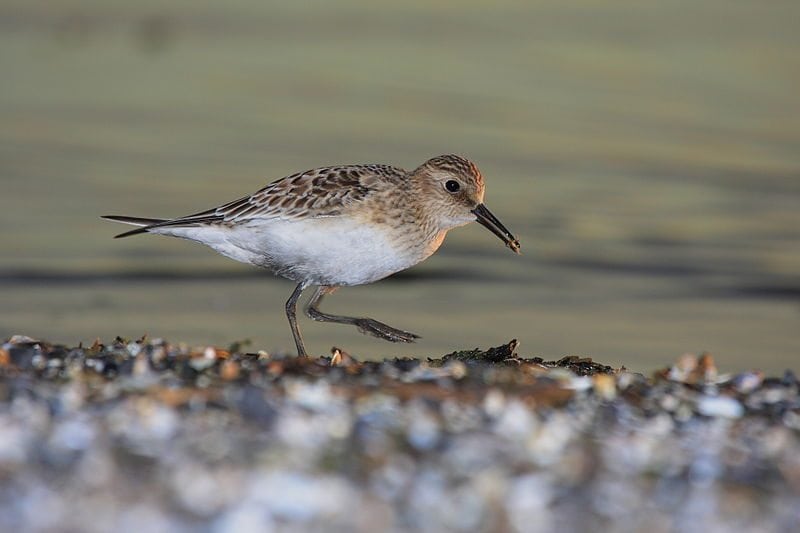
Incidentally, “Birder Bob” Hirt is currently the president of Santa Clara Valley Audubon Society (for the second time) and some years ago was president of Golden Gate Bird Alliance. He participates as an area leader for both the Oakland and San Francisco Christmas Bird Counts and is involved in various bird conservation efforts, but most of all he just loves to go out birding — and is an amazing birder and leader.
The primary destination for birders wanting to see an avalanche of species arriving from Mexico in the spring is High Island, Texas, an hour-and-a-half drive northeast of Houston. These birds fly non-stop across the Gulf of Mexico from the Yucatan Peninsula and often don’t arrive until mid-afternoon after flying all night. Some days are better than others, but when these tired travellers start dropping out of the sky to rest, High Island can be an amazing place to bird. Numerous species, mostly in bright breeding plumage, hop around in the trees and on the ground. It’s difficult to move your binoculars rapidly enough to see them all.
Houston Audubon Society owns and manages a series of properties in High Island and on the nearby Bolivar Peninsula. The most famous is Boy Scout Woods, where among the trails and boardwalks is a small grandstand area focused on The Drip. A constant recirculating water source located on a large tree with a small pool of water beneath, The Drip acts as a major attraction to the newly-arrived migrants, both thirsty and starved.
One late afternoon, The Drip was absolutely hopping with birds: Scarlet and Summer Tanagers, Baltimore and Orchard Orioles, Rose-breasted Grosbeaks, Indigo Buntings, and various warblers, including Magnolia and Black-throated Green, and Northern Waterthrush.
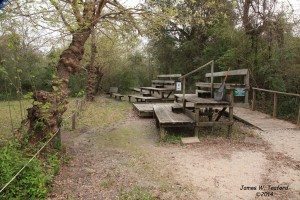
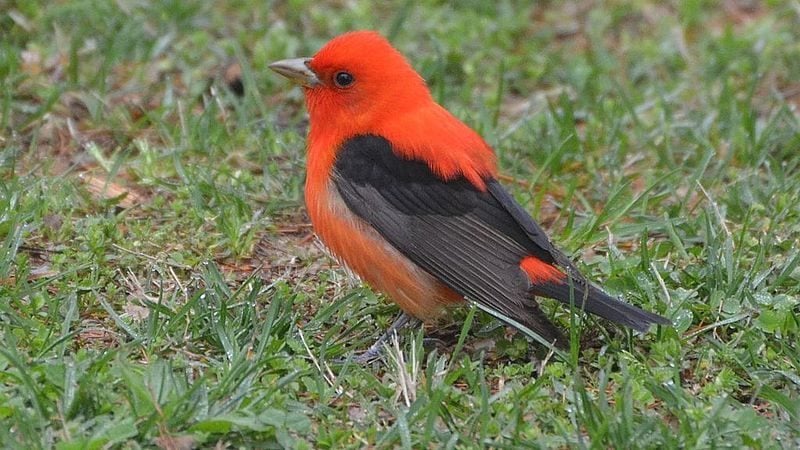

A birder sat on the grandstand in front of me and soon, in a rich but soft voice, began accurately naming and commenting on each bird species as it appeared — obviously an extremely knowledgeable and confident birder. His voice sounded very familiar, but I couldn’t put my finger on who it was. Then he turned part way around, and I immediately recognized Victor Emanuel, the founder and primary owner of one of the world’s most famous bird tour companies, Victor Emanuel Nature Tours (VENT), whom I first met around 1978 when I was a new member of the National Audubon Society board. Later. over a Thanksgiving weekend in 1980 or so, I took Victor birding on the Monterey Peninsula. We had not seen each other in more than 30 years, but had a fine reunion at Boy Scout Woods.
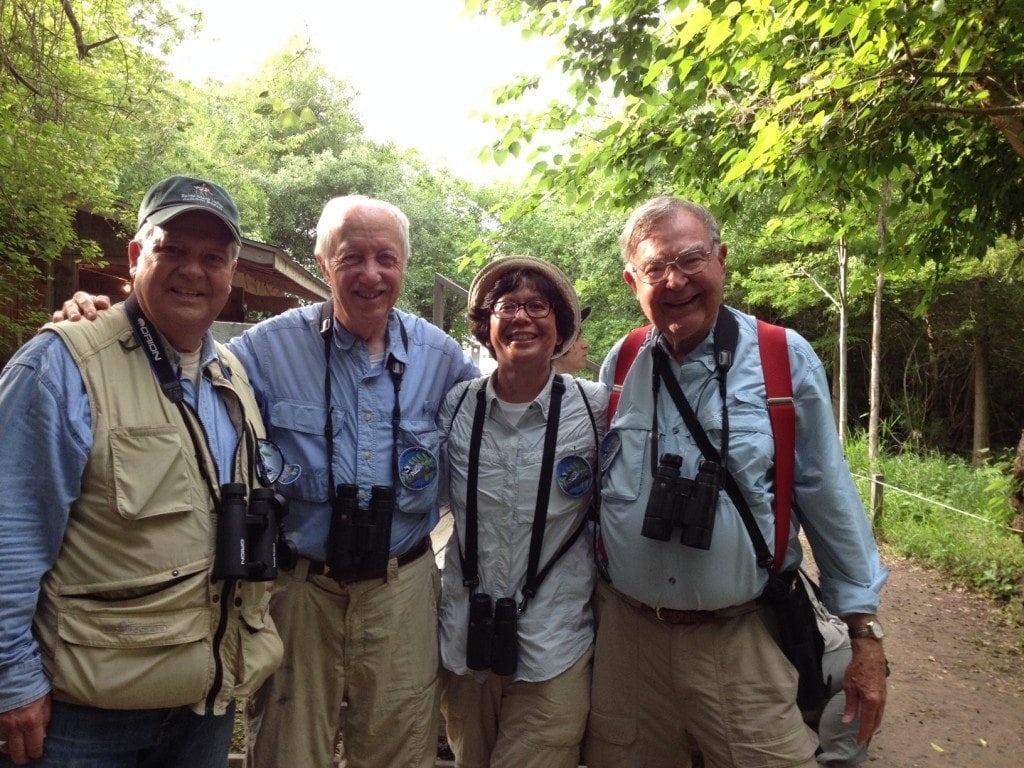
Victor wasn’t the only famous birder we spotted. Early one day after birding in the flooded fields between Winnie and High Island, Birder Bob pulled up behind a parked car with a birder looking through his scope. That turned out to be Sandy Komito, famous as the triumphant winner in the 1998 Big Year of book and movie fame, seeing 747 species in the ABA Area (North America north of Mexico, including Alaska and Canada), a record that was only topped last year by Neil Hayward of Massachusetts. Birder Bob had led Sandy on two very long pelagic trips during that historic Big Year. Lani and I had a chance to visit with Sandy, who had become somewhat of a hero to her in the process of doing her own Big Year. He turned out to be totally charming. An unexpected highlight of Lani’s Big Year!
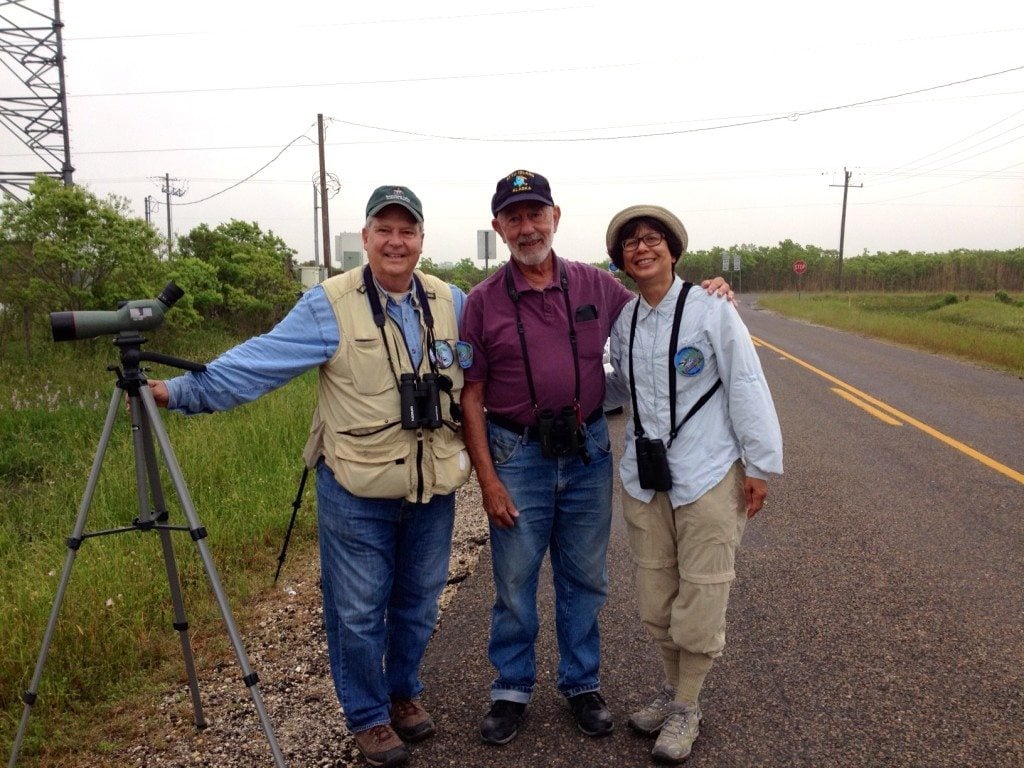
Lest you think that the birding is all easy on the Texas Coast, let me mention three challenges that periodically slow you down. Some days it can be extremely humid and quite hot, so your clothes are dripping. Fortunately for us, there were few of those days during our visit. Next, it often rains very hard, sometimes bringing down thousands of migrants in a thunderstorm, but also causing trails and dirt roads to become flooded and muddy. Many of the local Texas birders wear calf-high boots to deal with this problem.
Finally, and often the biggest challenge, is mosquitoes. One of the best places to bird in High Island is Smith Oaks, another bird reserve owned by Houston Audubon. When we first went to Smith Oaks, I put insect repellent on my hands and exposed skin – and the mosquitoes promptly landed on my repellent-covered skin and continued biting. The mosquitoes also bit right through our clothing, so that on the back of one leg alone Lani had over 30 red, itchy bites.
Lani is very prone to mosquito bites, often attracting them when no one else is being bitten. So she made a key decision. Much of the rest of our time birding in Texas, she wore both a rain jacket (with the hood up) and rain pants. It was hot and sweaty – but Lani didn’t want swarming mosquitoes to cause her to miss any key Target Birds.
All in all, our trip to Texas was an exceptional success. Before we came, I had guessed that if Lani left Texas with a total of 450 species for the year, she would be doing very well. Instead she totally cleaned up, ending her Texas stay with 481 species on her Big Year List..
A large part of Lani’s success was due to the amazing birding skills and tenacity of “Birder Bob” Hirt, who never even slightly slowed down in his efforts to find Lani new Target Birds. To give you just one indicator of her success: By the end of April she had seen all but six of the many regularly occurring warblers east of the Mississippi River, i.e., Mourning, Connecticut, Worm-eating, Black-throated Blue, Cerulean and Kirtland’s. That is truly amazing!
Next up: Magee Marsh, the other magnet for spring migrants, about 15 miles east of Toledo, Ohio, on the shore of Lake Erie. We would participate in the “Biggest Week of Birding” there, followed by birding in nine different states over the course of four weeks, a schedule that was exhausting even to plan.
————————————
Lani Rumbaoa now has seen 525 bird species after a month-long trip to nine eastern states and a week-long trip to the Sierras. Click here to read the previous posts on Lani’s Big Year.
